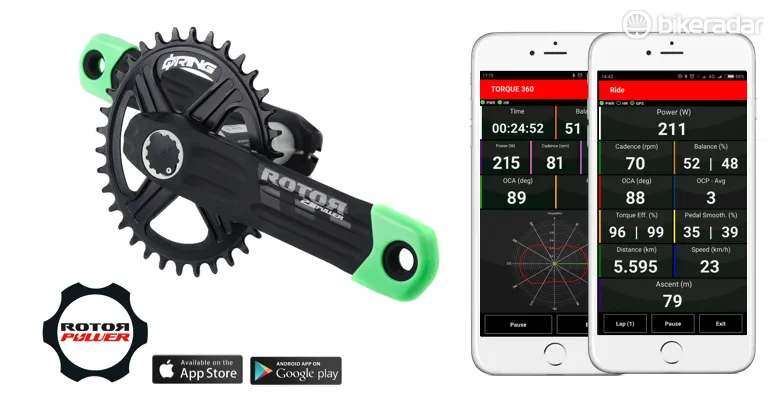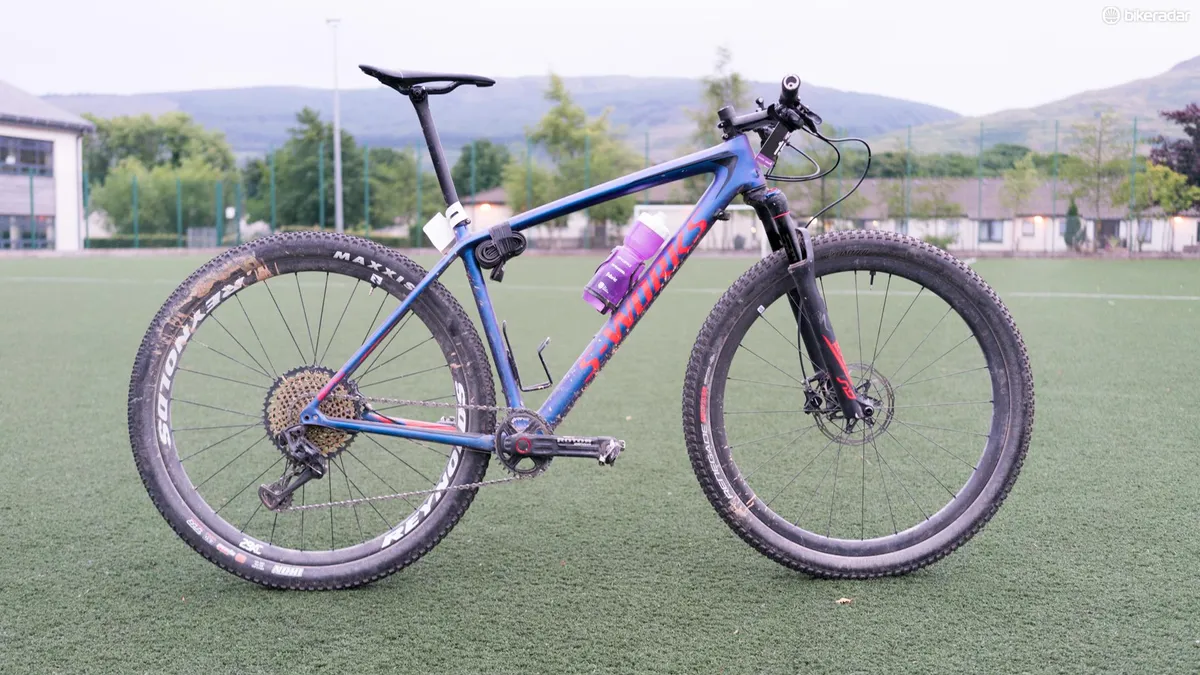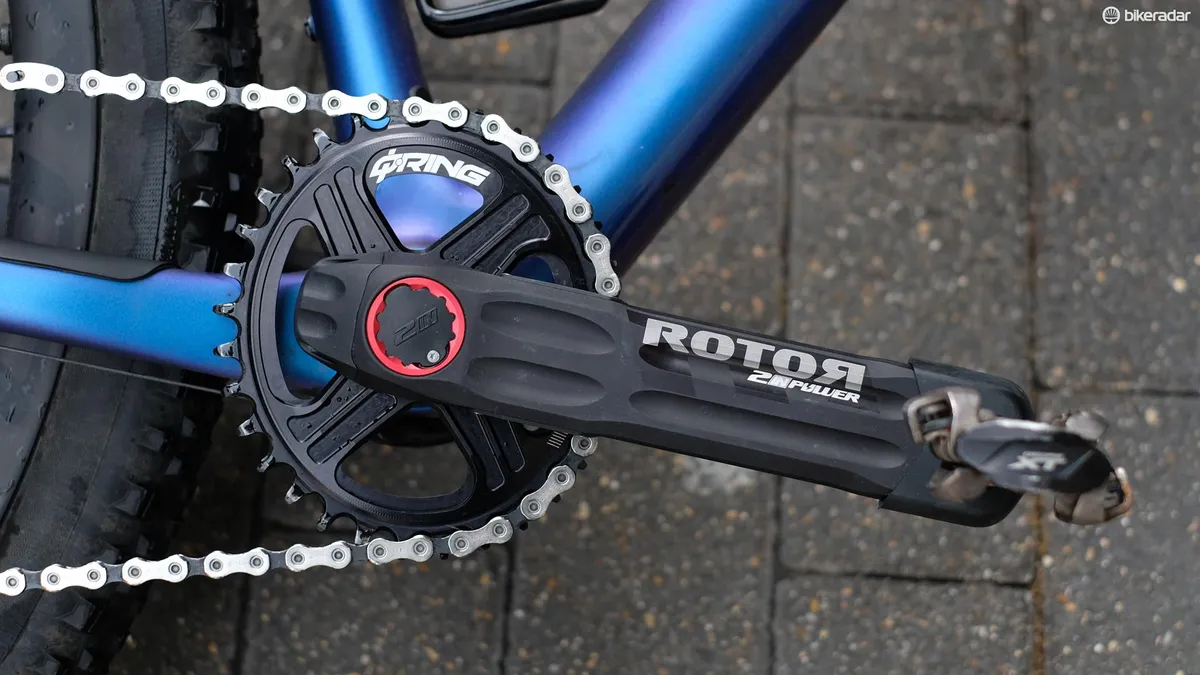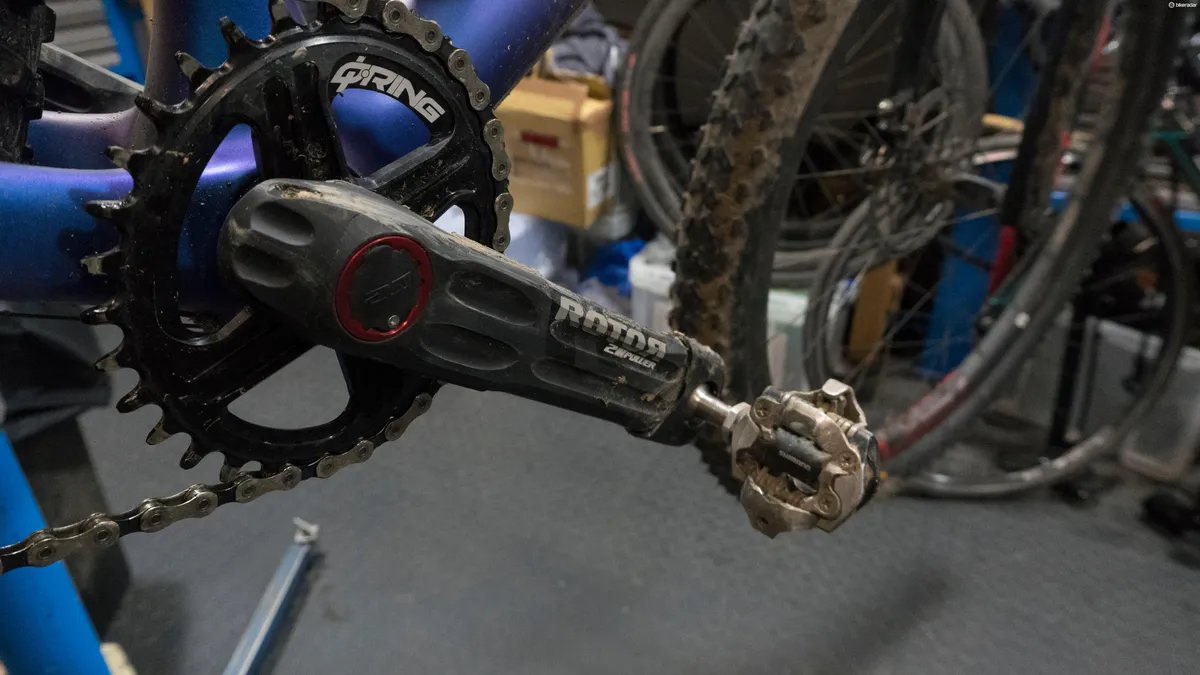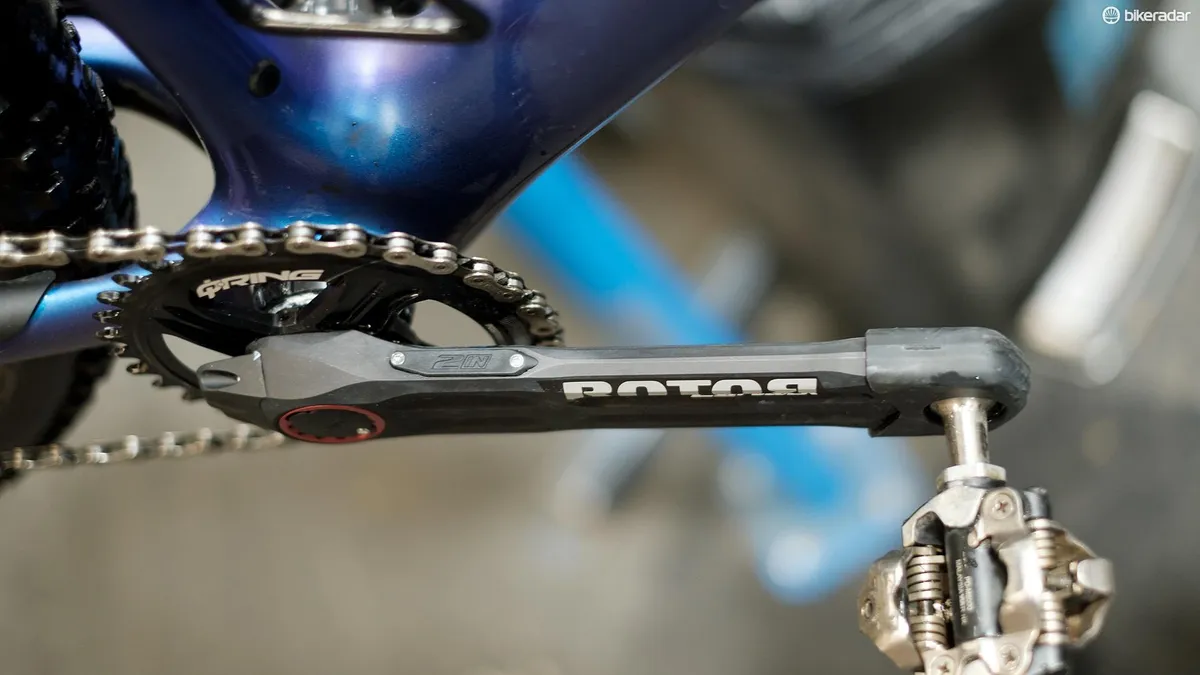If you’re reading this review you probably already know what a power meter is, and how temperamental they can be. In fact, type in the name of almost any brand's power meter online and you’ll find horror stories from riders who’ve either broken them or had issues with accuracy and reliability.
So, when it comes to reviewing a power meter, any tester wants to spend a long time using the product before making a final judgment. Having spent almost 200hrs riding Rotor’s new 2INpower mountain bike power meter I feel I’ve done just that and will hopefully be able to give you a thorough overview of its performance.
In an ideal world I would have liked to have ridden it for a full year (about 530 hours of riding for me) but you can’t have everything, and often products are usurped within that time, thus making the review obsolete.
I’ll go over the features of the 2INpower, then the most important stuff: accuracy, consistency and reliability. Fancy features such as pedal analysis are nice, but in order for a power meter to score well, it has to excel in these three parameters above all else.
Finally, I’ll go over any other extra features that are unique to the 2INpower.
Rotor 2INpower MTB power meter features
The 2INpower’s headline feature is that it’s the world’s first true double-sided mountain bike power meter, meaning that unlike Rotor's single-sided INpower power meter or a Stages, which reads power from the left crank arm and doubles it, you get specific readings from each leg.
In theory, this makes for more accurate data and means you can work out if one leg is stronger than the other. Or, work on any pedalling imbalances you may have.
The right-side power meter is in the crank arm, while the left-side power meter is built into the spindle, hopefully keeping all the electronic bits away from any mud, grime and water.
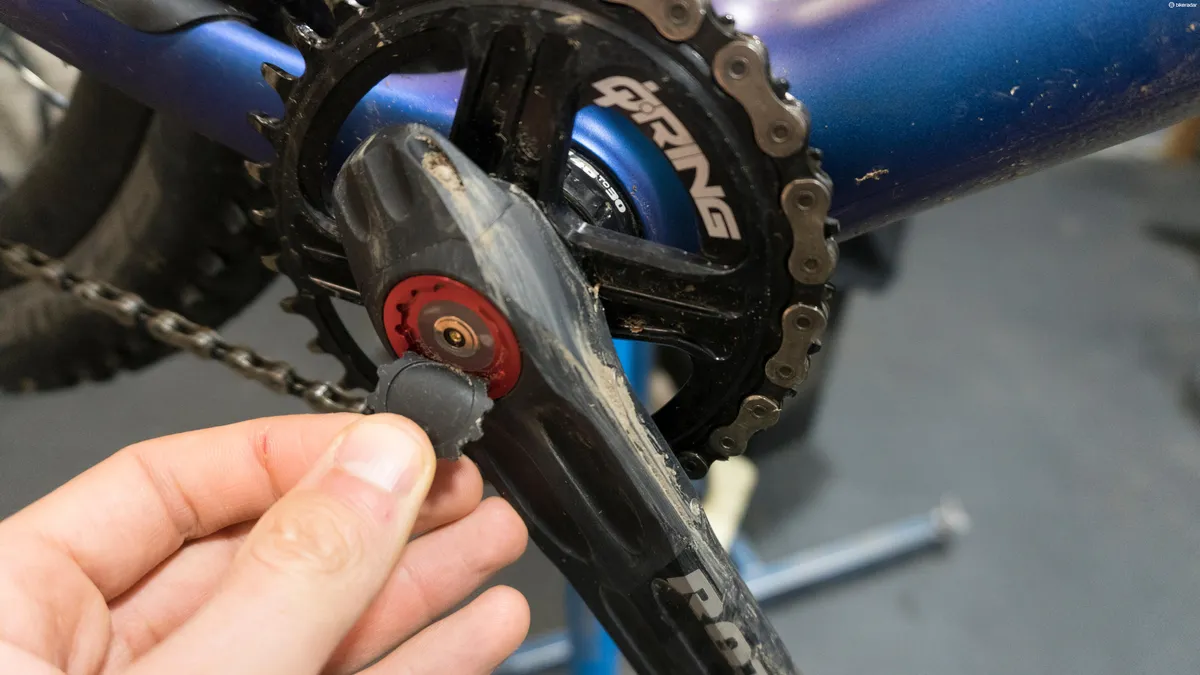
Coming from Rotor means it’s compatible with its Q-rings, which are claimed to reduced fatigue by eliminating the dead spot in your pedalling. The 2INpower features Rotor's new direct-mount model. It’s much neater, easier to fit, a touch lighter, and means you can run tiny chainrings down to 26 teeth.
Being double-sided means it’s slightly heavier than the single-sided INpower model, coming in a 713g instead of 665g, and that’s with a 32t Q-ring. That’s light, but not earth shatteringly so.
The Q-factor has had to be widened a touch to 169.5mm, which isn’t great for riders with narrow hips (like me) but should mean it’s compatible with most mountain bike frames. It comes with Rotor’s 30mm axle, which combined with its own bottom brackets means it’ll fit just about any mountain bike frame on the market too.
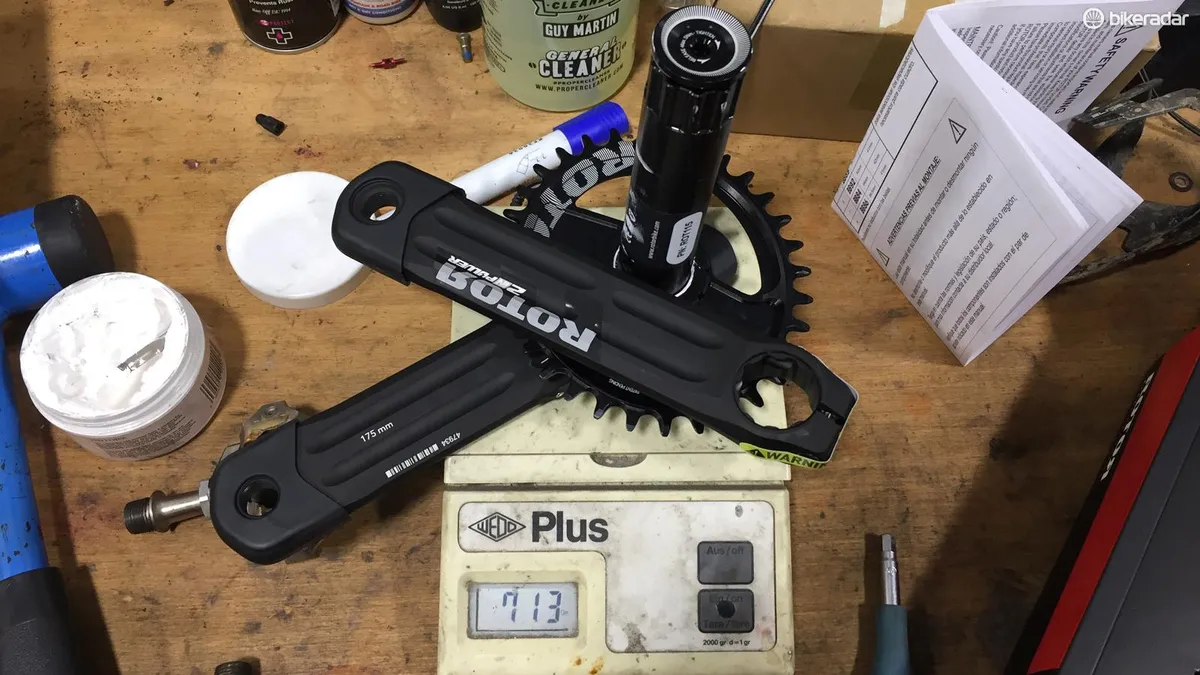
It uses Ant+ or Bluetooth to connect to your computer and features a rechargeable battery, which is housed inside the spindle and accessed via a flap on the driveside. It’s available in 165, 170 and 175mm crank lengths and retails for just over the £1,000 mark.
Finally, it also comes with small rubber boots, which protect the bottom of the crank arms from rock strikes and any other nasties you might hit.
On paper this all looks great, but that only tells part of the story. I was more interested in how it would perform out in the real world.
Rotor 2INpower MTB power meter accuracy/consistency
A power meter isn’t much use if the information it provides is inaccurate, e.g. wildly inflated or underinflated wattage readings. In an ideal test I would have run two extra power meters on my bike at the same time as the Rotor, meaning I could then track them all against each other — that’s the gold standard in power meter testing.
However, I don’t have a two extra power meters lying around that would work with the Rotor 2INpower. Instead I had to use incidental knowledge of the power I know I’m capable of and some long-term tracking on Strava.

Having used power meters since 2010 I’ve got a pretty good idea about the watts I’m capable of when I’m riding well. If a power meter is wildly under or over reading it soon becomes apparent, just in terms of how my legs feel when I’m pushing on the pedals. So far, the 2INpower hasn’t thrown up any anomalies — my best effort for 20 minutes is very similar to the last few years, and same goes for my best effort for 5 minutes. In that sense, it’s accurate enough for me.
Next up was some long-term Strava tracking on a 6–7min climb, which I do much of my training on. In the last four years I’ve ridden this climb over 600 times and nearly always with a power meter, so I have a lot of long term data and experience to refer to when it comes to testing the accuracy/consistency of a power meter.
Once again, the Rotor tracks well compared to all the other power meters I’ve used on that climb over the years. There were no super-fast times with unusually low/high wattage readings, and visa-versa.
On days when I did multiple reps, the power and times would drop consistently as I became more fatigued throughout the ride, e.g. as each rep got marginally slower in time, the wattage would also drop.
If I was being super picky, it probably reads a little high compared to something like an SRM or a Quarq, and gives similar numbers to something like a Stages, which I have often found to read slightly high.
As previously mentioned, these tests aren’t perfect, but on the whole, I’ve been very happy with the accuracy and consistency of the 2INpower.
Rotor 2INpower MTB power meter reliability
Power meters aren’t cheap, so reliability is an important factor in the review process. After using the 2INpower for around 200hrs I can say that reliability has been excellent.
It’s been through plenty of biblically wet/muddy mountain bike rides and races, and so far there’s been no water ingress into the electronics. I suspect this is partly down to Rotor hiding much of this in the crank axle, which obviously keeps it out of the way from the worst of the weather.
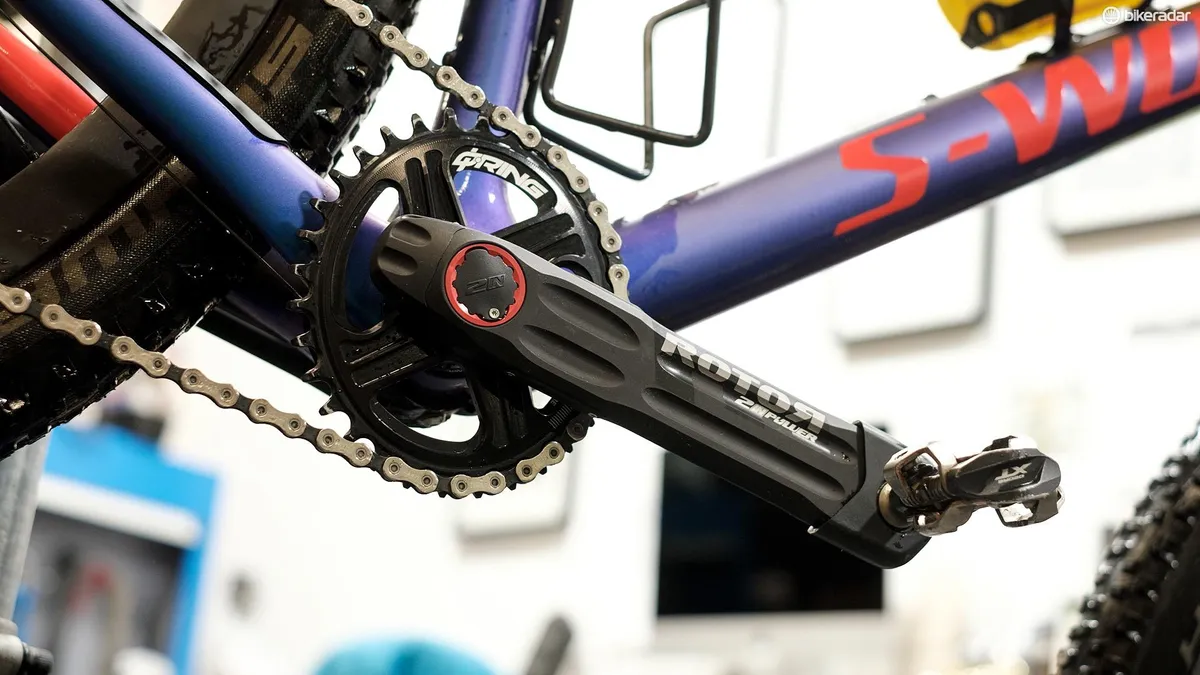
Signal dropout can often be an issue with power meters and the 2INpower is no exception. During my time using the unit I’ve experienced five, which have all lasted around 3–5 seconds. This isn’t a deal breaker for most, because losing 5 seconds of data won’t be the end of the world, but it’s still annoying on a power meter that costs so much.
The rechargeable battery has been a godsend. You lift up a small flap on the right crank arm and plug the magnetic charging cable in. You’ll need to be near a power source, such as a plug socket, but it means no more messing around with tiny batteries or fiddly ports. It just works. Plain and simple.
Finally, bar having to re-tighten it once, I’ve had no mechanical issues with the crank. It’s plenty stiff (though how you accurately measure that I have no idea) and has held up well to the daily grind of commuting, training and racing.
Other bits and bobs
Having a true two-sided measurement has been interesting and has shown on average that my left leg is 2 percent stronger than my right. In theory this means I could do specific work to iron out the imbalance, but perhaps that’s for another feature.
Rotor has user software offering proprietary metrics for the 2INpower, namely the OCA (optimum chainring angle), which can be found by conducting a Torque 360 pedal analysis.
As the Rotor chainring has five different positions, the Optimum chainring angle test helps you dial in which position suits you and your pedalling style best. This can be done via an app on your phone or with a computer, although you will need a Rotor dongle.
I’ve got on really well with the Rotor Q-ring and feel it deserves its own review, so keep an eye out on BikeRadar in the future.
Rotor 2INpower MTB power meter overall
At £999 the 2INpower isn’t cheap, but if you have deep pockets and want a reliable, accurate and true two-sided crank-based mountain bike power meter, then it comes highly recommended.
There are a few quirks, such as the slightly wider Q-factor, the extra weight and the aforementioned signal dropouts, but nearly every product comes with compromises, and they’re ones I’m willing to live with.
If anyone else has experience (good or bad) with the Rotor 2INpower, please let me know in the comments. I’d love to hear how you got on and hopefully it will help other readers to build up a truer picture of how this product performs.
I’ll hopefully be keeping hold of the 2INpower for even more long-term testing, so keep an eye out on this article for any updates in the future.


